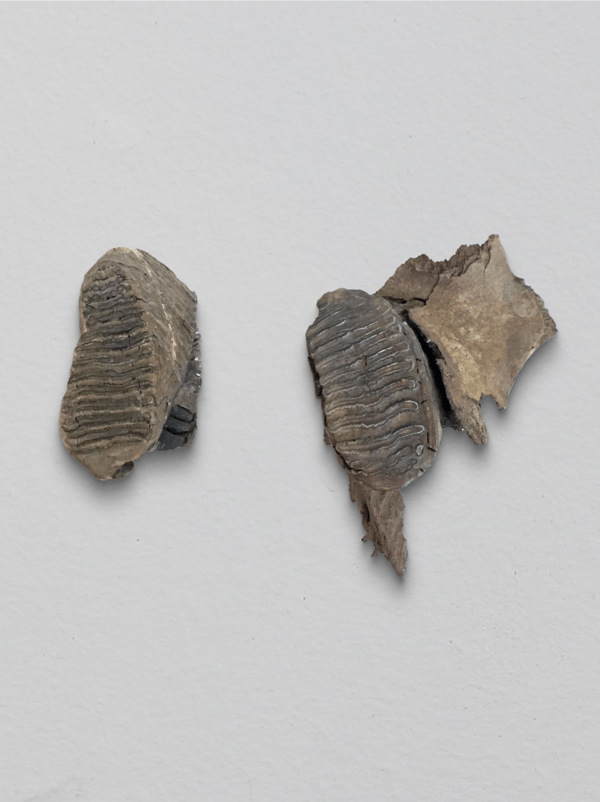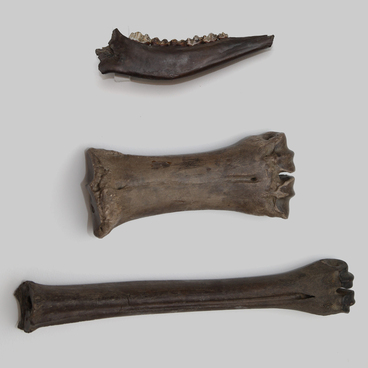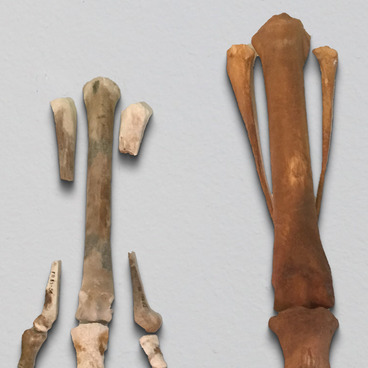The teeth of ancient mammals are one of the most valuable sources of information about them. Through the teeth, you can determine what species the animal belonged to, as well as its approximate age and possible sex.
Adult mammoths of all species had six teeth in the jaw: four chewing teeth and two incisors - tusks. The chewing teeth of all mammoths were broadly similar. They resembled a file made of separated dentin plates covered with enamel, firmly attached to each other. The bumpy surface of the chewing teeth allowed mammoths to cope with rough plant food - tundra grasses, willow or pine branches.
Two main features made it possible to discover the specific type of mammoth. The first is the number of plates per 100 mm of the chewing surface of the tooth, and the second is the thickness of the enamel.
The older steppe elephant had fewer plates, but they were framed by thick-walled enamel. The woolly elephant was a younger species, and its number of plates per 100 mm of tooth surface was larger and the enamel was thinner.
Both steppe elephants and woolly mammoths changed teeth up to six times during their life. The first were milk teeth and then they were replaced by molars. When the elephant reached a certain age, new teeth formed in the back of the jaw and began to displace old ones that were worn out during the feeding process. At the time of the change, 10 teeth, including tusks, could be seen in the animal’s jaw.
The first shift took place at about one year of age. The last shift took place in the middle of the elephant’s life. When the old animal completely ground down the last pair of teeth, it died of hunger. With the discovery of even one mammoth tooth, one can quite accurately determine the age of its owner. The ‘dental scale’ developed by scientists also made it possible to determine that mammoths grew faster than modern elephants and were six months ahead of them in development.
Tusks - enlarged incisors - can sometimes tell the sex of an animal. Although both males and female ancient elephants had tusks, in females these teeth were thinner and did not reach the length of males.
The molars of steppe elephants and woolly mammoths were extremely durable - they are most often found in lacustrine, river and even marine sediments.
Adult mammoths of all species had six teeth in the jaw: four chewing teeth and two incisors - tusks. The chewing teeth of all mammoths were broadly similar. They resembled a file made of separated dentin plates covered with enamel, firmly attached to each other. The bumpy surface of the chewing teeth allowed mammoths to cope with rough plant food - tundra grasses, willow or pine branches.
Two main features made it possible to discover the specific type of mammoth. The first is the number of plates per 100 mm of the chewing surface of the tooth, and the second is the thickness of the enamel.
The older steppe elephant had fewer plates, but they were framed by thick-walled enamel. The woolly elephant was a younger species, and its number of plates per 100 mm of tooth surface was larger and the enamel was thinner.
Both steppe elephants and woolly mammoths changed teeth up to six times during their life. The first were milk teeth and then they were replaced by molars. When the elephant reached a certain age, new teeth formed in the back of the jaw and began to displace old ones that were worn out during the feeding process. At the time of the change, 10 teeth, including tusks, could be seen in the animal’s jaw.
The first shift took place at about one year of age. The last shift took place in the middle of the elephant’s life. When the old animal completely ground down the last pair of teeth, it died of hunger. With the discovery of even one mammoth tooth, one can quite accurately determine the age of its owner. The ‘dental scale’ developed by scientists also made it possible to determine that mammoths grew faster than modern elephants and were six months ahead of them in development.
Tusks - enlarged incisors - can sometimes tell the sex of an animal. Although both males and female ancient elephants had tusks, in females these teeth were thinner and did not reach the length of males.
The molars of steppe elephants and woolly mammoths were extremely durable - they are most often found in lacustrine, river and even marine sediments.



